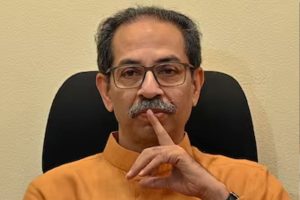Last week, US Secretary of State Antony Blinken and Secretary of Defence Lloyd Austin were in Australia as part of a wider tour of Oceania, comprising the islands that stretch across the south and central Pacific Ocean. Both officials attended the 33rd session of AUSMIN or the Australia-United States Ministerial Consultations, the principal ministerial-level meeting through which the countries manage their regional alliance. The reason for these high-profile visits is not far to seek. As Bruce Jones of Brookings writes, the driving force is the USA’s need to respond to China’s sustained increase in presence, engagement, economic ties, and logistics presence across Oceania.
US near-term objectives in the Indo-Pacific range from renewed diplomatic engagement and enhanced people-to-people initiatives to an improved defence posture in the region as well as new strategic initiatives. Washington has already renewed basing arrangements in the Philippines; a new, US-Australia base-cum-logistics station in Papua New Guinea has been okayed; the Australia-UK-US submarines plus agreement has been inked; arrangements for trilateral defence cooperation between the USA, Australia, and Japan have been approved, and US embassies, USAID offices, and Peace Corp offices in several Pacific Island nations have been opened. However, as another expert Mireya Solís has repeatedly emphasised, the economic dimension of US relations in the Asia-Pacific region lags the strategic.
Advertisement
The Washington-promoted Indo-Pacific Economic Framework is seen in the region as a tepid version of the earlier proposed Trans-Pacific Partnership trade agreement. But this matters mainly to the developed economies of East Asia. For the sparsely populated island nations of Oceania, the issues are different. The biggest of them all is neglect. Since the end of the Cold War, America has largely ignored Oceania though its main regional allies Australia and Japan have done slightly better. That America’s renewed interest in Oceania is premised solely on its geopolitical interests given the rise of China is the dominant narrative in the region, and one which it will be difficult for the USA to counter effectively in large part because it is true. Jones expresses the hope that sustained, patient engagement by Washington may help overcome suspicions but concedes it doesn’t help that US policy is weak on these countries’ vital, even existential interests ~ climate change and adaptation.
America has only lately, and rather grudgingly, accepted the need for financing climate adaptation; this is a massive issue for the islands of Oceania whose very existence is threatened by sea-level rise. It is Beijing which is increasingly being seen as the city on the hill as it is both able and willing to support small island states in multilateral fora on global warming. It helps that China doesn’t have to pay the bill to finance adapting to climate change, but even if it did it probably would as it is the rising global power willing to walk the extra mile. That, at least, is the perception, and the results are already there to see. The Solomon Islands have allowed Chinese police presence on their territory, Vanuatu is indicating it will follow suit, and Kiribati has withdrawn from the Pacific Islands Forum, cut diplomatic ties with Taiwan, and accepted a Chinese bid to restore a dualuse airstrip on the island.











